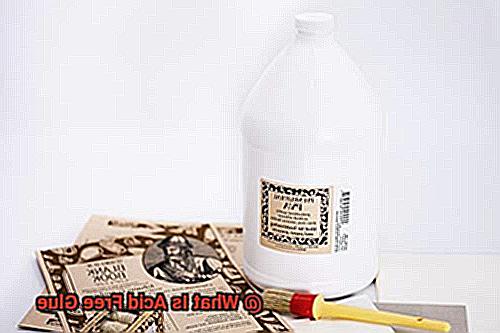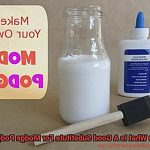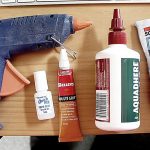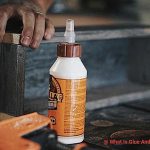Welcome to our blog, where we explore the captivating world of adhesives. Today, we’re unraveling the mysteries of acid-free glue – a mighty and versatile adhesive that plays a vital role in various industries and art forms. Acid-free glue is specially crafted to shield delicate materials and extend their lifespan. Whether you’re an artist, collector, or DIY enthusiast, understanding the purpose and benefits of acid-free glue can revolutionize your approach to projects.
But what sets acid-free glue apart? Unlike traditional glue, acid-free glue is formulated without acidic compounds that can cause harm and deterioration to applied materials. This makes it an exceptional choice for preserving delicate artworks, photographs, and documents, as well as creating long-lasting crafts and scrapbooking masterpieces.
By using acid-free glue, you can ensure that your cherished memories, valuable collections, and precious creations remain intact for years to come. Moreover, this adhesive is also advantageous for professionals working with fabrics, wood, leather, and other materials that require a non-damaging adhesive solution.
Intrigued? Stay tuned as we dive deeper into the properties, applications, and top recommendations for acid-free glue. Uncover the secrets behind this extraordinary adhesive and learn how it can revolutionize your creative endeavors. So grab your trusty glue gun – together let’s embark on this adhesive adventure.
What is Acid Free Glue?
Contents
- 1 What is Acid Free Glue?
- 2 Advantages of Acid Free Glue
- 3 Types of Acid Free Glue
- 4 Applying and Drying Time for Acid Free Glue
- 5 Potential Compatibility Issues with Acid Free Glue
- 6 Industries that Use Acid Free Glue
- 7 Preservation Benefits of Using Acid Free Glue
- 8 Health Considerations When Using Acid Free Glue
- 9 Conclusion
Join us on this journey as we delve into the world of acid-free glue and uncover its significance in preserving and protecting valuable items. From delicate photographs to cherished artwork and documents, acid-free glue is a game-changer, ensuring the longevity and integrity of these precious materials.
Understanding Acid-Free Glue:
Defining Acid-Free Glue:
- Acid-free glue is an adhesive specially formulated to be free from acidic components.
- Boasting a neutral pH level of around 7 or slightly higher, it is safe to use on delicate materials.
- Acid-free glue is made from non-acidic substances, such as synthetic polymers, preventing damage or degradation.
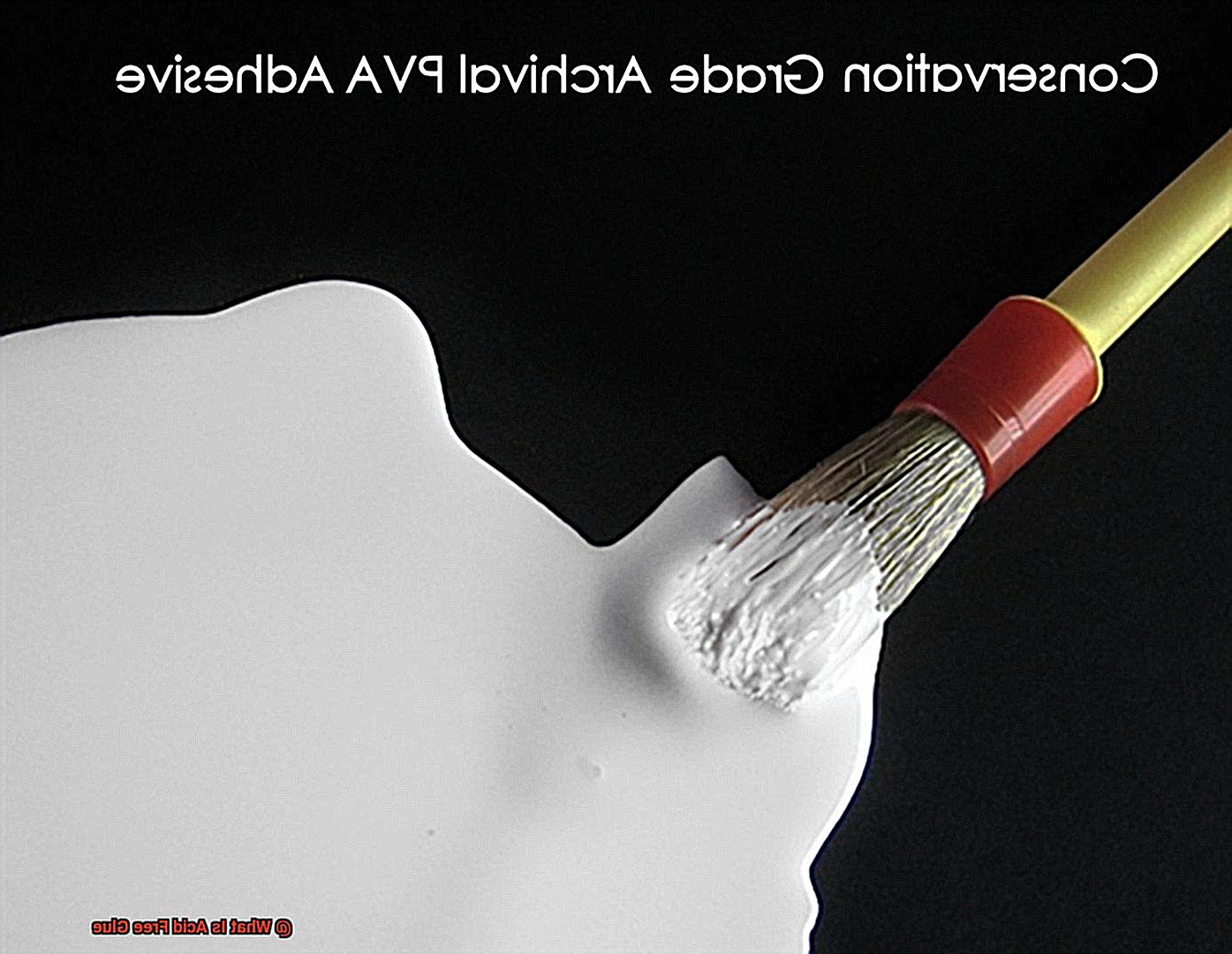
Advantages of Acid-Free Glue:
Preservation of Longevity:
- Over time, acidic glues can cause irreversible damage like yellowing, fading, or deterioration of materials.
- Acid-free glue assures that the adhesive itself does not contribute to any degradation or deterioration.
- It safeguards the original quality and appearance of valuable items.
Versatility:
- Acid-free glue finds applications in scrapbooking, bookbinding, framing artwork, and repairing delicate objects.
- It provides a sturdy and enduring bond without compromising material quality or safety.
Choosing the Right Acid-Free Glue:
Product Labeling:
- When selecting acid-free glue, prioritize products specifically labeled as such.
- Some adhesives may claim to be acid-free but still contain minute amounts of acidic compounds.
- Reading product labels and checking for certifications or endorsements from archival organizations guarantee truly acid-free options.
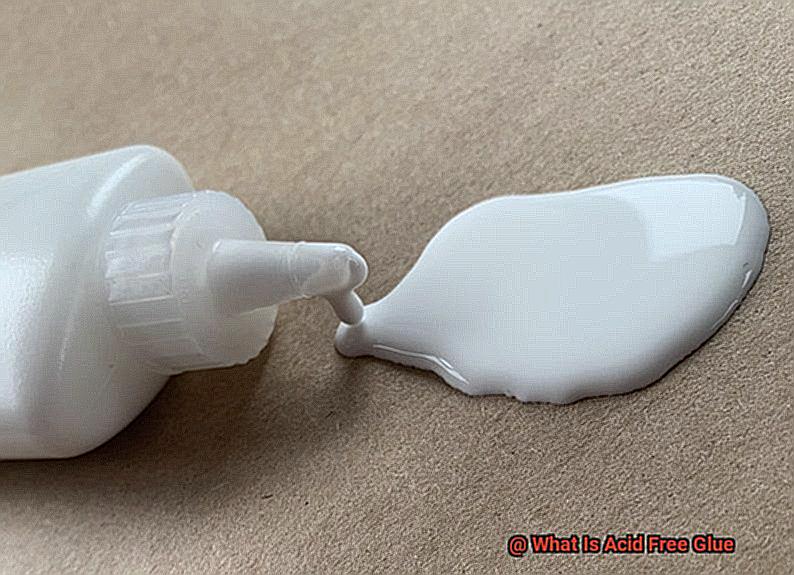
Advantages of Acid Free Glue
Step into the enchanting world of acid-free glue, where preservation meets creativity. In this blog post, we will explore the numerous advantages of using acid-free glue and how it can make a significant difference in safeguarding your precious artwork and memories. So, let’s dive right in.
Preservation of Artwork:
Imagine the heartbreak of seeing your favorite painting or treasured family photograph slowly deteriorating over time due to the harmful effects of acidic glue. Acid-free glue eliminates this risk, ensuring the longevity and preservation of delicate and valuable pieces.
Non-Yellowing Perfection:
Nothing is more disheartening than witnessing a cherished photograph or document lose its original beauty due to yellowing. Acid-free glue is specially formulated to resist yellowing, allowing your memories to remain vibrant and intact for years to come.
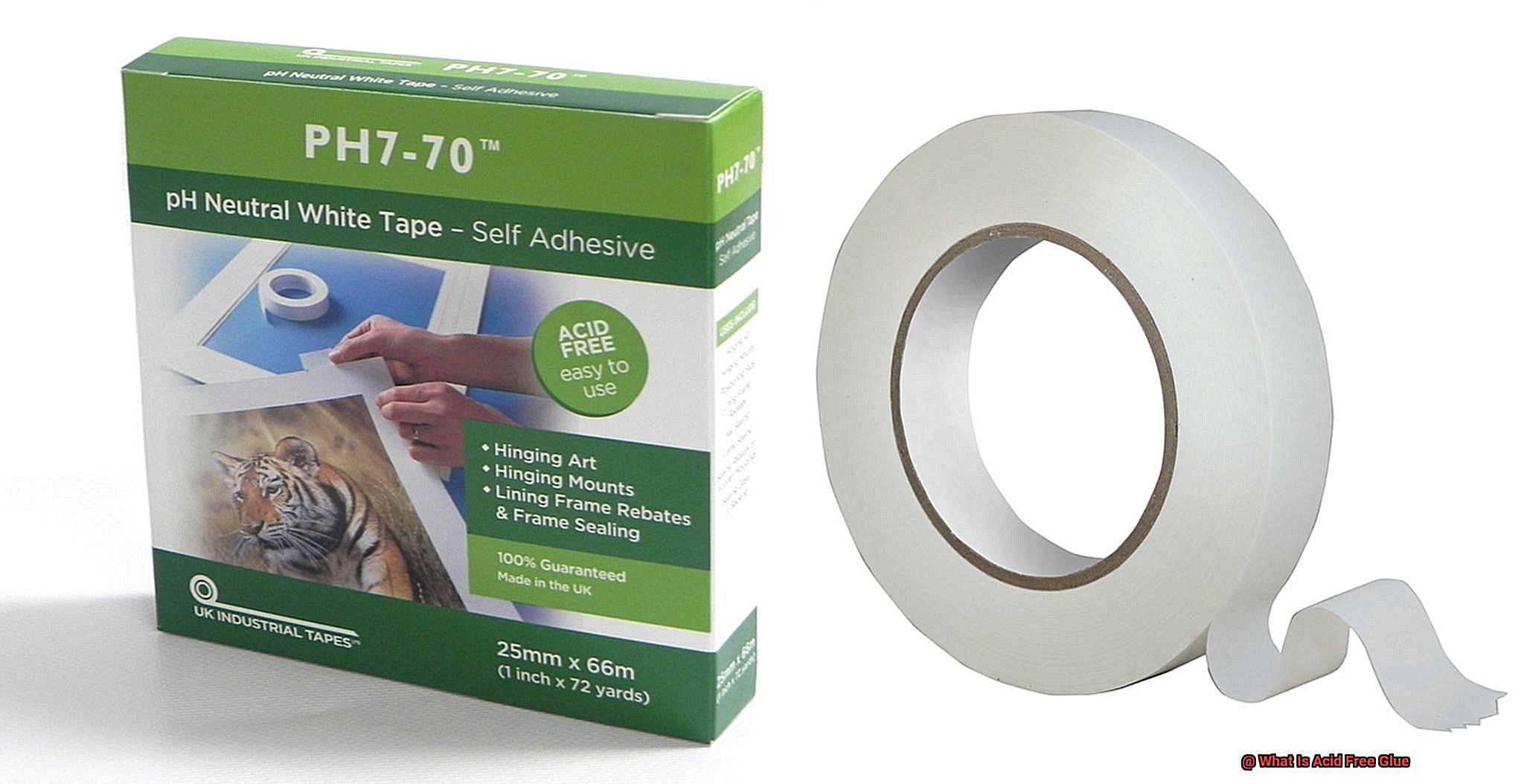
pH Neutral Wonder:
With a pH level close to neutrality, acid-free glue prevents chemical reactions that could lead to discoloration or damage to your materials. This means your precious artwork remains true to its original colors, preserving its aesthetic appeal and value.

Strong and Durable Bond:
Whether you’re working with paper, fabric, wood, or other surfaces, acid-free glue provides a strong and durable bond that withstands the test of time. No more worrying about your carefully crafted projects falling apart.
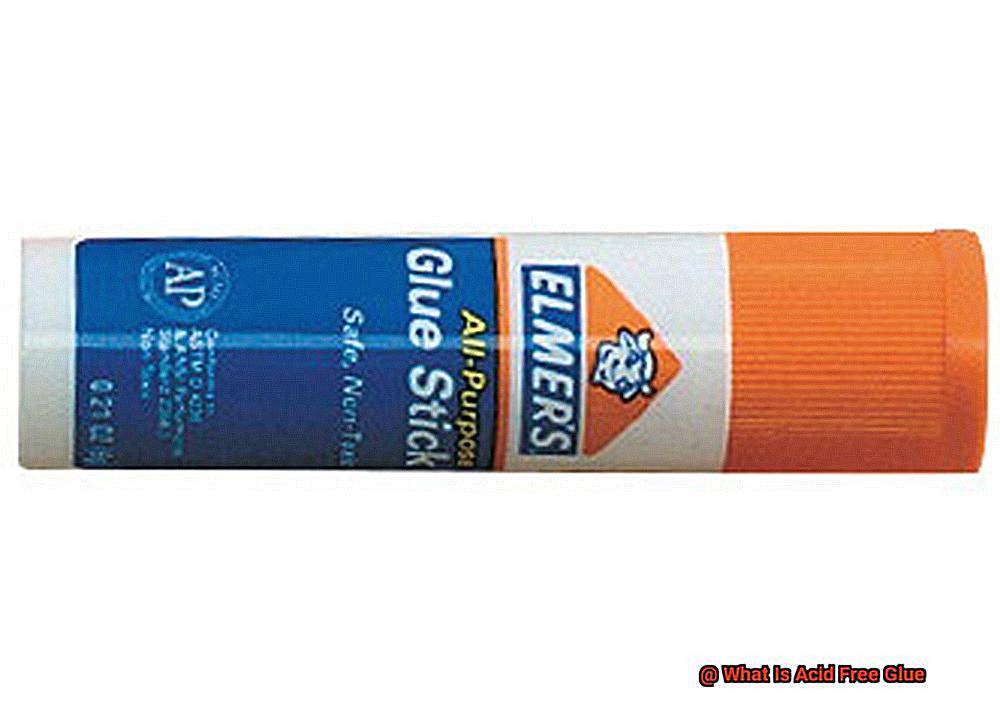
Safe for All Ages:
Crafting with children? Fear not. Acid-free glue is safe for people of all ages as it doesn’t contain any harmful chemicals or toxins. Let your little ones explore their creativity without any worries.
Versatility at Its Best:
From scrapbooking and card-making to woodworking and model-building, acid-free glue is a versatile adhesive that can be used in various creative endeavors. Its compatibility with both porous and non-porous surfaces makes it a go-to choice for all types of crafting projects.
Minimal Residue, Maximum Satisfaction:
Say goodbye to unsightly residue and hello to a clean, professional finish. Acid-free glue leaves minimal residue or staining, ensuring that your artwork and projects look flawless.
Easy Application for Effortless Crafting:
With convenient forms like squeeze bottles or applicator pens, acid-free glue makes application a breeze. You have full control over the amount and distribution of glue, saving you time and effort.
Types of Acid Free Glue
Acid-free glue is a game-changer in this regard. In this article, we’ll delve into the diverse world of acid-free glue, exploring its various types and their specific uses, thereby equipping you with the knowledge to choose the perfect adhesive for your projects.
PVA Glue: The Versatile Wonder
Polyvinyl acetate (PVA) glue emerges as a versatile acid-free adhesive suitable for an array of projects. It possesses the remarkable ability to dry clear and flexible, rendering it ideal for bonding paper, cardboard, fabric, and wood. Whether you’re passionately scrapbooking treasured memories, fashioning captivating collages, or crafting unique jewelry, PVA glue has got your back.
Methyl Cellulose Glue: The Gentle Guardian
Methyl cellulose glue stands tall as a plant-based adhesive crafted specifically for preserving delicate materials. This acid-free glue is often employed in bookbinding and conservation work, where its high pH level ensures the safeguarding of old books and documents. What sets it apart is its unhurried drying time, affording you the luxury of repositioning and making adjustments during the gluing process.
Epoxy Resin: Unyielding Strength
When it comes to intricate projects and jewelry making, acid-free epoxy resin steals the show as your go-to adhesive. Its two-component formula combines effortlessly to form an indomitable bond resistant to water and heat. Epoxy resin is tailor-made for metals, glass, ceramics, and select plastics, ensuring your precious creations remain securely held together without any worries.
Silicone-Based Glues: The Reliable Bond Builder
For those moments that demand a robust and flexible bond capable of withstanding the harshest conditions, silicone-based glues prove to be your stalwart companions. These acid-free adhesives, commonly employed in construction and household applications, expertly bond materials like glass, metal, plastic, and rubber. Rest assured that your projects will stand the test of time.
Specialty Glues: Tailored Solutions
Some acid-free glues cater to specific materials or purposes, providing tailored solutions for your creative endeavors. Acid-free fabric glue offers a safe bonding solution for fabrics, ensuring your masterpieces retain their beauty without compromising their integrity. Similarly, acid-free wood glue guarantees robust bonds without any discoloration or damage to the wood. These specialty glues are designed to meet the unique needs of specific projects.
Applying and Drying Time for Acid Free Glue
Well, fear not. Acid free glue is here to save the day. But before you dive headfirst into your next craft project, it’s important to understand the importance of following manufacturer instructions and allowing sufficient drying and curing time when applying this magical adhesive.
First things first, what exactly is acid free glue? It’s a special type of adhesive that is formulated without any acidic components. This means that it won’t cause discoloration or deterioration over time, making it safe to use on delicate materials. So, if you’re planning on preserving your beloved memories or creating something truly special, acid free glue is the way to go.
Now, let’s talk about application. When using acid free glue, it’s crucial to follow the manufacturer’s instructions for the specific product you’re using. In general, you’ll want to apply the glue evenly and thinly to both surfaces that you’re bonding together. This will ensure a strong and durable bond that will stand the test of time.
Next up, drying time. The length of time it takes for acid free glue to dry can vary depending on a few factors. The type of material you’re gluing, the humidity level in your environment, and the specific brand of glue can all affect drying time. It’s best to err on the side of caution and allow sufficient drying time to ensure a strong bond. While acid free glue tends to have a faster drying time compared to other adhesives, it’s still important to be patient and give it enough time to fully dry.
But wait, there’s more. Drying isn’t the end of the story. Acid free glue also needs time to cure. This process can take anywhere from a few hours to several days, depending on the specific product. During this curing period, it’s important to avoid applying excessive pressure or stress on the glued area. This will help prevent any potential damage or weakening of the bond before it has fully set.
If you’re in a hurry, some acid free glues may require additional drying aids, such as heat or pressure, to speed up the process. Always refer to the product instructions or consult with the manufacturer for specific recommendations.
Once your acid free glue has fully dried and cured, it should provide a strong and long-lasting bond. But before you start tossing your masterpiece around, it’s a good idea to test the strength of the bond. Give it a gentle tug or apply a bit of pressure to see if it holds up. If it passes the test, you’re good to go.
And finally, if you happen to have any excess dried glue that needs to be removed, be sure to do so with care. Gently scrape it off with a sharp tool or use a dedicated glue remover. Just be cautious not to damage the underlying material in the process.
Potential Compatibility Issues with Acid Free Glue
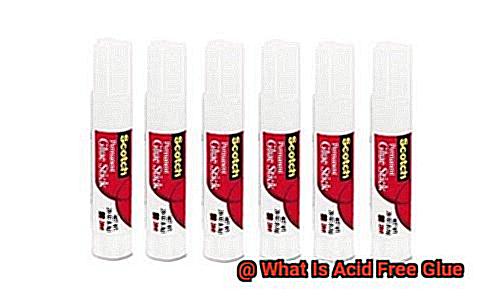
Finding an adhesive that combines gentleness with durability is a crucial aspect of any crafting or preservation project. Acid free glue, designed to be long-lasting and gentle on delicate materials, offers an ideal solution.
However, it is essential to understand potential compatibility issues that may arise when using this type of glue. In this article, we will explore various subtopics related to acid free glue to provide you with an engaging and informative overview.
Material Considerations:
- Acid free glue may not adhere well to non-porous or smooth finishes.
- Testing the glue on a small, inconspicuous area before applying it fully is crucial to ensure compatibility.
Mixing Adhesives:
- Different glues with incompatible chemical compositions can react negatively when mixed together.
- Consistency is key; using the same type of adhesive throughout a project helps avoid compatibility issues.
Environmental Factors:
- Extreme temperatures and high humidity levels can impact the performance of acid free glue.
- Following the manufacturer’s guidelines regarding temperature and humidity conditions is essential for optimal results.
Outdoor Use:
- Acid free glue may not be suitable for outdoor applications due to exposure to sunlight, moisture, and other environmental factors.
- For projects intended for outdoor display, consider using outdoor-rated adhesives.
Long-Term Stability:
- While acid free glue is designed to resist yellowing and deterioration over time, certain factors can still affect its longevity.
- Proper storage in a controlled environment is crucial to ensure the preservation of items glued with acid free glue.
Industries that Use Acid Free Glue
Industries that use acid-free glue are diverse and varied, each benefiting from this adhesive’s ability to preserve and protect materials. From the art and crafts industry to bookbinding, conservation and restoration, packaging, and the paper industry, acid-free glue plays a crucial role in ensuring longevity and integrity.
In the world of art and crafts, acid-free glue is a superhero for artists and hobbyists working with delicate materials like paper, fabric, and photographs. Unlike its acidic counterparts, which can cause discoloration and degradation over time, acid-free glue forms a gentle yet resilient bond that keeps artwork pristine for years to come.
Bookbinding would be a sad sight without acid-free glue. Historical books with yellowing pages and brittle bindings need an adhesive that won’t harm their fragile nature. Acid-free glue steps in to preserve these literary treasures, maintaining crisp pages and strong bindings that withstand the test of time.
Conservation and restoration professionals rely on acid-free glue to revive artifacts, documents, and artwork. Fragile pieces require glues that won’t cause further damage or degradation. Acid-free glue saves the day once again, allowing conservators to repair or attach delicate components without harming the object at hand.
The packaging industry turns to acid-free glue to protect goods during shipping or retail display. Acidic glues can transfer their acidity to packaged items, leading to damage or deterioration. Acid-free glue acts as the ultimate protector, ensuring products arrive in pristine condition.
Finally, the paper industry depends on acid-free glue for various applications. Whether it’s high-quality stationery or printing processes, acid-free glue guarantees that paper products maintain their integrity and longevity. No matter the conditions or exposure to light and moisture, this adhesive keeps paper strong.
Preservation Benefits of Using Acid Free Glue
In the world of preservation, acid free glue is the unsung hero. With its neutral pH level and preservation benefits, this adhesive has the power to save cherished memories and protect centuries-old artifacts from deterioration. In this passage, we will explore the advantages of using acid free glue and how it can preserve various items.
Preservation Benefits of Acid Free Glue:
Protection against Acidic Damage:
Acid free glue is formulated with a neutral pH level, unlike regular glues that contain acidic components. This superhero adhesive acts as a shield, preventing damage caused by acidity. It safeguards delicate materials from brittleness, discoloration, and even dissolution, ensuring their longevity and preserving their original condition.
Ideal for Archival and Conservation Work:
Trusted by museums, libraries, and professional conservators, acid free glue plays a vital role in preserving valuable items for future generations. By preventing acid migration and related issues, this adhesive protects historical artifacts, artwork, and documents from irreversible damage. It acts as a guardian angel, safeguarding our most cherished possessions.
Immediate Durability without Compromising Integrity:
Acid free glue not only provides a strong and durable bond but also maintains the integrity of the materials it adheres to. Whether you’re scrapbooking, crafting, or repairing old books, this superhero adhesive ensures that your items remain intact without any damage caused by acidity. It supports you like a reliable sidekick.
Reversibility for Future Treatment:
Unlike permanent adhesives that are difficult to remove, acid free glue offers reversibility. This means that if you ever need to treat or repair your items in the future, you can easily remove or reposition the adhesive without causing further damage. It’s like having a superhero that can undo any mistakes and save the day once again.
Versatility for Various Materials:
Acid free glue isn’t limited to paper-based materials. It can also be used on fabric, leather, wood, and metal. Its versatility makes it a popular choice for preservation and restoration projects across different industries. With this superhero adhesive, you can protect a wide range of materials from the destructive powers of acidity.
Health Considerations When Using Acid Free Glue
Preserving precious memories and artwork is made possible with the help of acid-free glue, a true superhero in the world of adhesives. However, it is important to be aware of the potential health considerations that come with using this product. By understanding these considerations, you can ensure your safety while enjoying the benefits of acid-free glue.
- Allergies: Before using acid-free glue, always check the label for potential allergens. Some individuals may be sensitive or allergic to certain ingredients in the glue, such as latex or specific chemicals. It is essential to know what you are working with to avoid any adverse reactions.
- Fumes: While acid-free glue is generally safe, it is still important to use it in a well-ventilated area. This helps to minimize the risk of inhaling any potentially harmful fumes. Open a window or turn on a fan to keep the air flowing while you work, ensuring a healthy environment.
- Skin Contact: Direct contact with acid-free glue can cause skin irritation or dermatitis if not handled carefully. To protect your skin, it is recommended to wear gloves or use a protective barrier, such as a brush or applicator, when applying the glue. Taking these precautions will keep your hands happy and healthy.
- Keep Away from Children and Pets: Although acid-free glue may be less toxic than other types of glues, it is crucial to keep it out of reach of children and pets. Accidental ingestion or contact with the glue can pose a risk to their health. Store the glue in a safe place where curious little hands (or paws) cannot reach.
- Proper Storage: To maintain the effectiveness of acid-free glue, store it in a cool and dry place. Extreme temperatures or humidity can affect its adhesive properties and potentially reduce its effectiveness. Treat your glue like a VIP by providing it with ideal storage conditions.
cvCQv0cHBWY” >
Conclusion
Acid free glue is a type of adhesive that does not contain any acidic components. It is specifically designed to be pH neutral, meaning it has a balanced acidity level that will not degrade or damage the materials it is used on. This makes acid free glue ideal for use in archival and preservation applications, as well as for crafts and projects where long-term durability is important.
Unlike regular glue, which may contain acidic ingredients that can yellow or deteriorate paper, acid free glue is formulated with materials that are gentle and non-reactive. It is commonly used in bookbinding, scrapbooking, and other paper-based crafts where preserving the integrity of the materials is crucial.
One of the key benefits of acid free glue is its ability to prevent discoloration and degradation over time. By using an adhesive that does not introduce acids into the materials, you can ensure that your projects or documents will remain vibrant and intact for years to come.
In addition to its archival qualities, acid free glue also offers excellent bonding strength. It can securely adhere various types of materials together, including paper, fabric, wood, and more. This makes it a versatile choice for a wide range of applications.
When selecting an acid free glue, it’s important to look for products that are specifically labeled as such. Not all glues on the market are acid free, so be sure to read the packaging carefully before making your purchase.
In conclusion, acid free glue is a pH neutral adhesive that provides long-lasting durability without compromising the integrity of materials. Its archival qualities make it an excellent choice for preserving documents and artwork, while its strong bonding properties make it suitable for various crafting projects.

